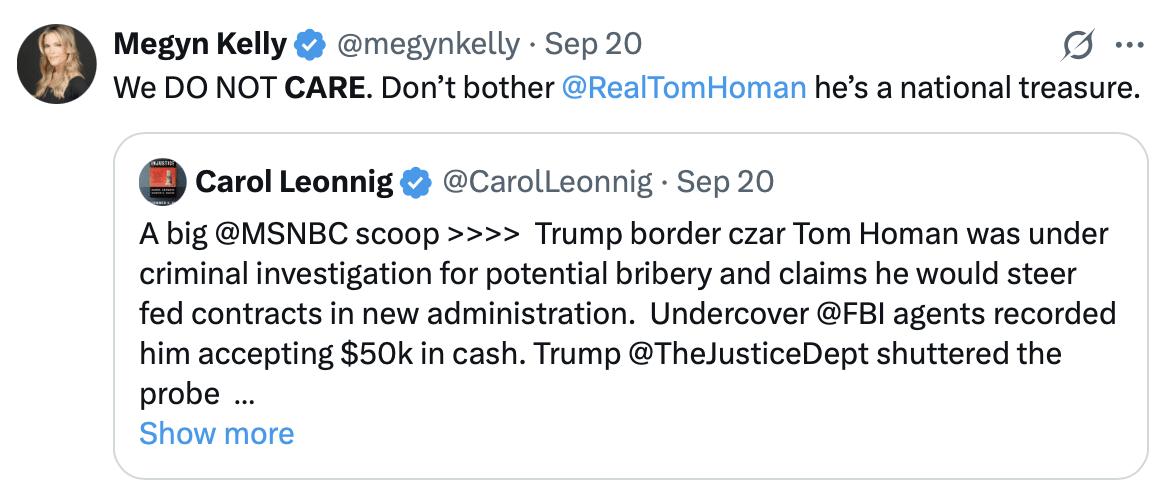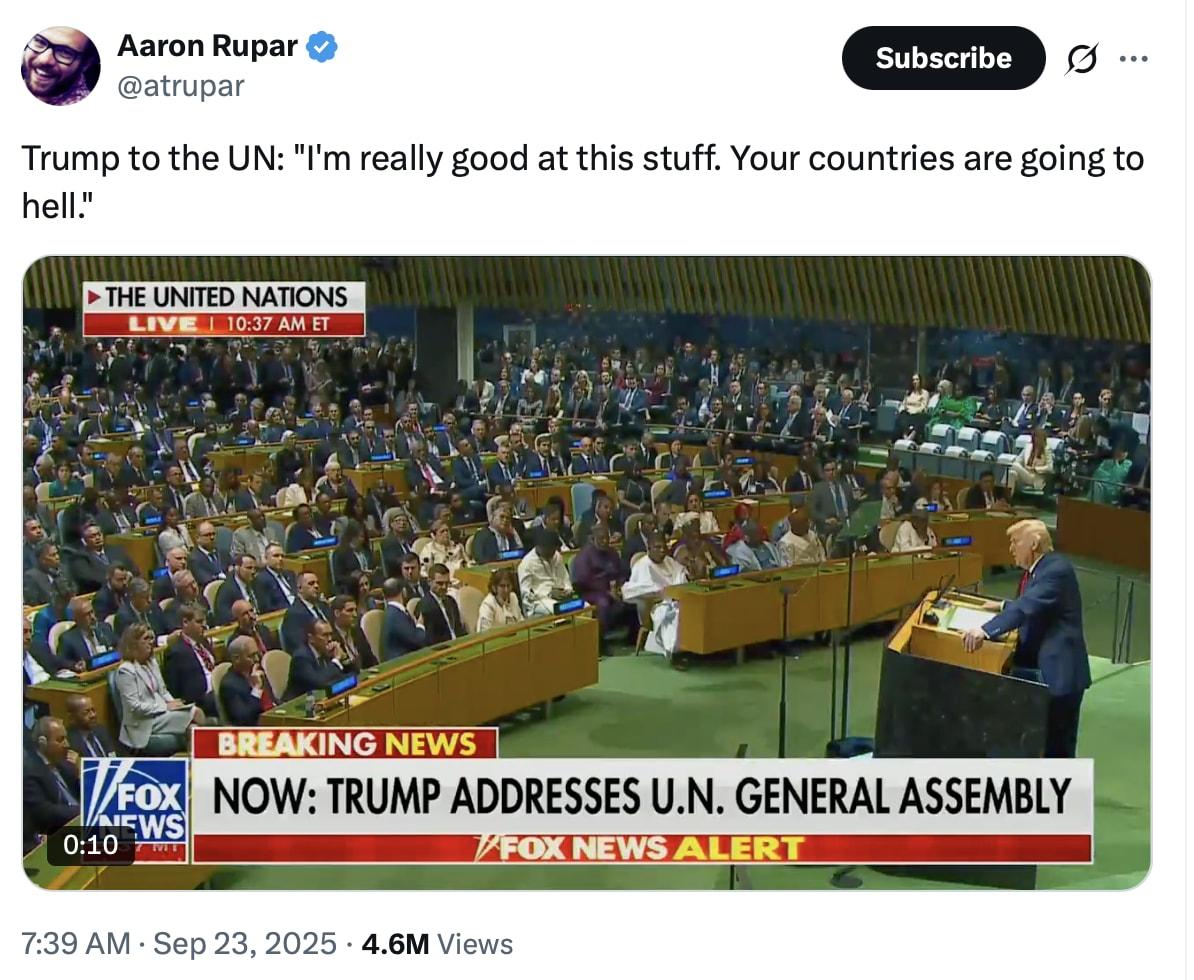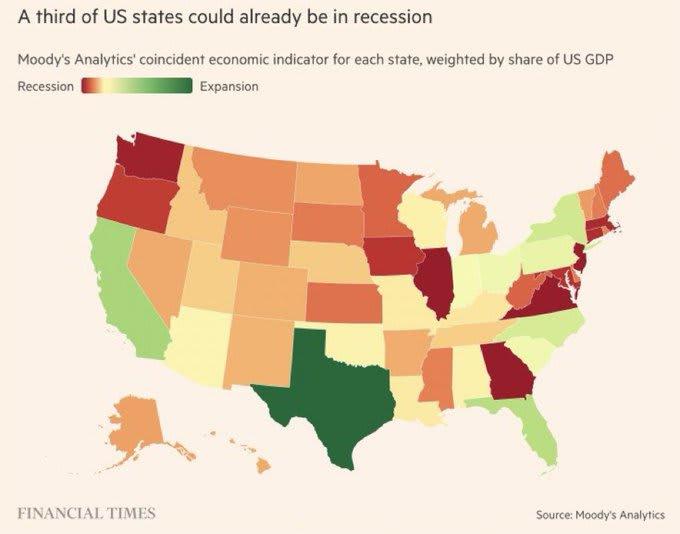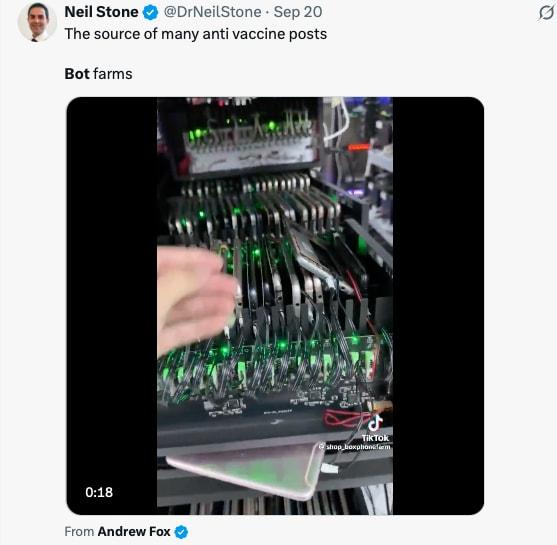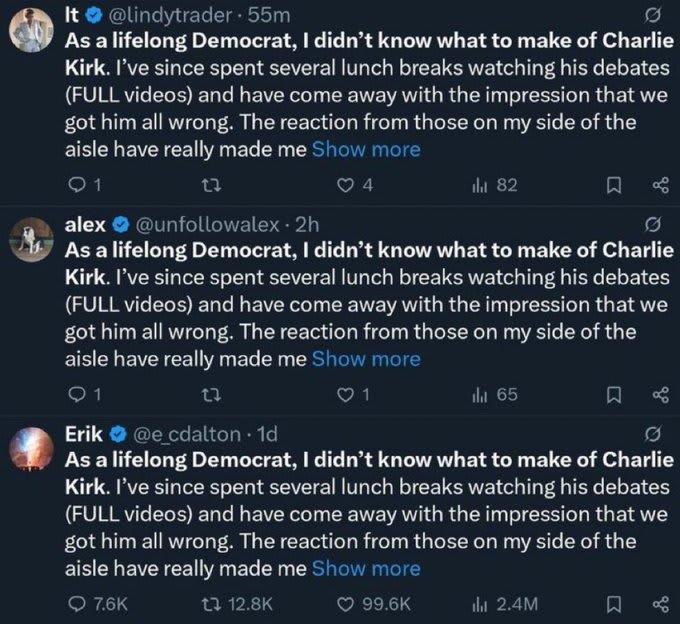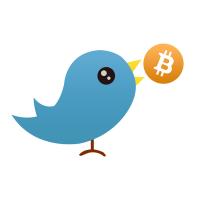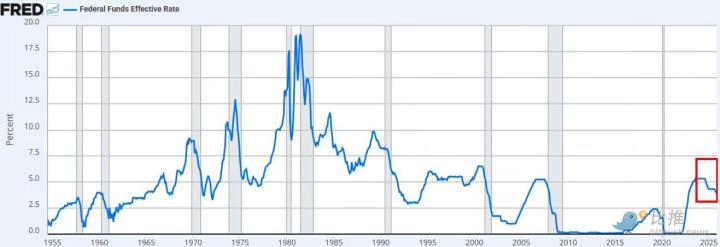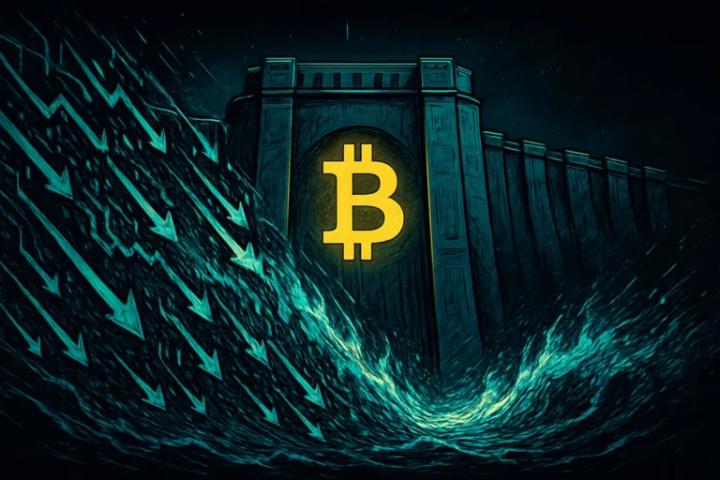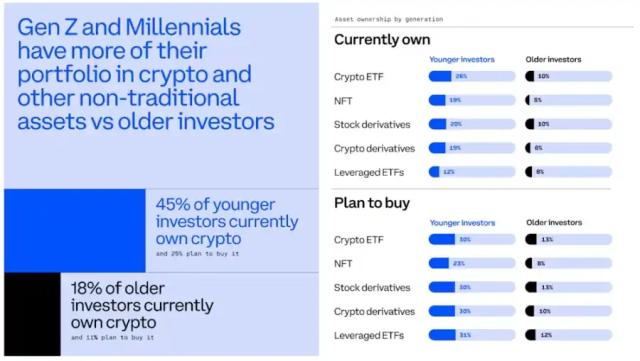Good morning!
This is a reader-supported publication. To receive new posts and support my work, consider becoming a paid subscriber.
It’s nearly impossible not to get lost in the news right now. I was at a wedding last week, and every conversation eventually drifted back to the same subject: the World We Are in and All That is Happening. The ground feels like it’s moving faster than anyone can feasibly keep up with.
Some people think the shift is progress. Others see collapse. Either way, the line between digital and physical life is increasingly blurry. What happens online is real life. What we consume is what we become.
Plenty of thinkers have circled this before - Postman, Debord, Huxley, Orwell on media; Machiavelli, Tocqueville, Thucydides, Gibbon on human corruptibility during times of uncertainty. The convergence of endless information and a ragebait economy creates the perfect environment for splintering how we understand the world and how we understand each other.
The deeper problem is this: we no longer trust institutions to provide truth, fairness, or mobility. Once, they were scaffolding that helped us climb from raw data to wisdom. And when that scaffolding gives out, people adapt: some over-perform in the status race (because you have to) and others defect from obligations altogether (why would I work for institutions if they don’t work for me).
The Architecture of Confusion
There are a few ways to picture our distorted information ecosystem.
The DIKW Pyramid (Data → Information → Knowledge → Wisdom): raw posts and clicks at the bottom, trending content in the middle, shared truths above that, and finally wisdom, the rare ability to see causes instead of just symptoms.
Or the Ladder of Inference: we start with data, add meaning, make assumptions - and our beliefs tend to affect what data we select. Bots and algorithms hijack that ladder, nudging us toward polarized beliefs before we realize what’s happening.
Taken together, we can combine them into what we might call a hierarchy of information:
Raw data: the endless stream of posts, likes, bot spam
Information: headlines, hashtags, trending things
Knowledge: the narratives we share and fight over.
Understanding: recognizing what might not be real (or is hyperreal)
Wisdom: systemic analysis, the ability to see causes instead of just symptoms.
Right now, we’re stuck sloshing around in the middle layers of the hierarchy: drowning in outrage, fighting over partisan hot takes, rarely reaching understanding, almost never wisdom.
Chaos always has an architect. And if we want to make sense of American democracy today, we need to understand who those architects are, and how they profit from confusion.
Media Concentration as Infrastructure
This polarization rests on media concentration. The Telecommunications Act of 1996 was sold as a way to increase competition in media and telecommunications, but in reality, it did quite the opposite. Within five years, four firms controlled ~85% of US telephone infrastructure. That deregulated spine carried today’s consolidation of the entire media environment - not just telephones. Newspapers. Social media. TV stations.
We have the increasing concentration of media ownership, the financialization of attention, and the transformation of information from a public good into a private commodity to be bought, sold, and manipulated.
For example, Larry Ellison is building a pretty huge empire. His son is running the newly merged Paramount-Skydance, and they might bid for Warner Bros. Discovery, giving them control of both CBS News and CNN. The Paramount merger only went through after they did Trump’s bidding and settled a $16 million lawsuit.
Ellison is also part of an investor consortium (which also includes the Murdoch family, the owners of Fox News) that might own TikTok. If Ellison’s deals go through, he would control streaming services with over 200 million subscribers (combining Paramount+ with HBO Max/Discovery+), a major broadcast TV network and news division (CBS), a premier cable news network (CNN), and one of the largest global social networks (TikTok)
Why does this matter? Because controlling the means of mass communication means controlling the narrative. It’s the attention economy version of a monopoly. When one person (or a small elite) owns the newspapers, the TV stations, and the social media platforms, there is no room for alternate voices.
But it’s sort of like… everyone gets their own information ecosystem. Elon Musk owns Twitter, which he leveraged into helping Trump win the 2024 election. Jeff Bezos owns the Washington Post and has nudged into being more accommodating. Mark Zuckerberg controls an empire of social apps and has faced repeated accusations of algorithmic bias.
When information is power and attention is currency, of course the people with the most money will try to buy the most influence. Normally, an entity like the FTC would be like “well no I don’t think one person should have extraordinary control over the information environment” but that’s not how things work right now. This White House is willing to weaponize the levers of regulation.
Trump has openly threatened to yank broadcast licenses from networks that criticize him. The logic is simple: want to keep your license? Say nice things about the president. Want a tariff cut? Promise foreign direct investment. Need a visa discount? Make a deal. Like Derek Thompson said, it’s flattery economics all the way down.
The head of the FCC, Brendan Carr, brought Jimmy Kimmel down for insensitive comments about Charlie Kirk’s tragic death and plans to bring everyone else too if they don’t play the right sea shanty honoring the administration.
Jimmy Kimmel get did taken down, but he was quickly put back on by ABC after they lost a few billion dollars.
However, two local broadcasting groups, Nexstar (who has a $6b merger they want to complete!) and Sinclair, both won’t air Kimmel.
Brendan Carr says that all of this happened because of Kimmel’s ratings, not the government. But then Trump gets on Truth Social and says:
“We’re going to test ABC out on this. Let’s see how we do. Last time I went after them, they gave me $16 million dollars. This one sounds even more lucrative. A true bunch of losers.”
So like, the government is clearly involved. This is a bad situation. The media environment that gave Trump the election - very specifically podcasters like Joe Rogan - have spoken out against this.
Joe Rogan: “If the government tried to silence Jimmy Kimmel because they were trying to push through some sort of merger and [Trump] doesn’t like Jimmy Kimmel, that should be exposed.”
But it’s pretty clear what’s happening. Free speech is whatever the administration deems to be not woke or whatever. It’s like vertical “cancel culture” - a state-capital hybrid where platforms and politicians use one another to discipline dissent.
Even if you agree with what the administration did, it’s becoming clear that our mass communication system is increasingly privatized, and optimized for profit and power, not necessarily for truth or public good.
In a landscape where capturing attention equals revenue, these guys have an incentive to make communication ever more addictive and sensational - which is never great for public discourse.
Red vs Blue
The fractures in our information system show up most clearly inside the United States itself. Bloomberg Opinion’s Ronald Brownstein called Trump’s “lawsuits, funding threats and the use of troops” that are leading to a growing chasm between red and blue states “the greatest strain on national cohesion since the Civil War.” Loyalty is shifting from the Constitution to the team colors.
Megyn Kelly, a prominent conservative commentator, said that she didn’t care that Trump’s border czar Tom Homan took a $50k bribe.
Part of the reason she likely doesn’t care is because everyone is getting away with everything right now. If you can play to Trump’s good side, the entire weight of US institutions will roll off your back. If you get on his bad side? You will be crushed. The rule of law becomes a sliding scale of loyalty.
And when the enforcement of rules feels optional, people start acting like rules don’t exist. But the narrative gets all twisted and weird as it gets filtered through different algorithms and amplified through different bot networks because it’s like “well… if the red light isn’t working, should anyone really stop? No? Plow through and risk it all? Certainly.” More and more, reality itself is treated as optional - not a fixed structure but a set of vibes and allegiances.
That’s why outrage has become America’s most reliable export. Trump told the United Nations that their countries were “going to hell.” It was an insult, sure, but also a tell: our national brand is grievance.
But the sad part here, is that the stakes are material as well as cultural. Mark Zandi, chief economist at Moody’s, warned that one-third of the country is already in recession. That kind of economic stress only deepens the fracture, giving each side its own “truths” about what’s happening and who’s to blame.
Culture wars should pale in the face of economic concerns, but they only get more inflamed.
The International Mirror
What's happening domestically is the same on the international stage. Trump's approach to international institutions is withdrawal, contempt, the deliberate sabotage of shared frameworks. Again, even if you agree with his policies, that’s objectively what he is doing.
Andreas Kluth described it as “assembled world dreading the fate of what diplomats call the ‘international community minus one.’” The country that used to build the systems is now dedicated to tearing them down.
It's the same logic that's fracturing us domestically - (1) the belief that cooperation (or at least visible cooperation) is weakness and (2) that shared institutions are obstacles rather than tools. And when people lose faith in shared institutions, when they can’t agree on basic facts or common procedures, they become vulnerable to manipulation by anyone with enough money or technology to fill that vacuum.
Attention flows to spectacle, and spectacle rewards the people willing to blow things up rather than build them. So people find alternatives. China is shoring up gold reserves, presumably in an attempt to dedollarize. Other countries might like that option more than a fiat currency backed by full faith and credit, without much faith or credit at the moment.
The New Power Structure
And other countries are having an influence in the US through a remarkably efficient market manipulation strategy. We have a bot problem here - and it’s helpful to think about it in economic terms.
Bots are essentially a low-cost, high-leverage way to manipulate information markets. The business model is elegant: a small upfront investment in fake accounts and automation can generate massive returns in terms of attention, narrative control, and ultimately political outcomes.
In 2010, during US midterm elections, researchers observed that bots were being employed to boost certain candidates and smear opponents - thousands of automated tweets linking to fake news sites were injected into the political debate. Even at that time, the ACM warned such activity could “endanger democracy by influencing the outcome of elections,” since voters might be swayed by what looks like a surge of public sentiment.
Bots truly entered public consciousness during the 2016 election, when researchers discovered that just 6% of Twitter accounts were responsible for 31% of all the low-credibility news in circulation (detailed the great paper The spread of low-credibility content by social bots.) Their strategy is to amplify early, create fake consensus, and let human psychology do the rest.
As Giovanni Luca Ciampaglia, one of the authors of the paper, put it:
People tend to put greater trust in messages that appear to originate from many people. Bots prey upon this trust by making messages seem so popular that real people are tricked into spreading their messages for them.
It’s a classic market manipulation strategy, adapted for the attention economy. A relatively small number of bot operators can manufacture social media reality by exploiting the network effects that determine what content gets visibility. At one point, an estimated 20–33% of tweeting activity about the major candidates in 2016 came from bots or sock-puppet accounts (fake accounts run by humans) rather than genuine supporters, according to Social Media Effects: Hijacking Democracy and Civility in Civic Engagement.
And bots have remained a fixture of online discourse ever since. The paper A global comparison of social media bot and human characteristics details it well:
In the 2020 US election, analysts again found bot networks “actively distort or fabricate narratives to create a polarized society”
During the COVID-19 pandemic, bot armies aggressively pushed anti-vaccine narratives and conspiracy theories on social media
Bots have also been caught boosting extremist movements (for instance, magnifying QAnon) by making them trend, thereby recruiting more human followers who stumble upon it.
The return on investment is extraordinary. For the cost of a few servers and some programming talent, foreign adversaries can influence American elections, domestic extremists can mainstream conspiracy theories, and commercial interests can manipulate public opinion on everything from vaccines to climate change. Global web traffic analysis has repeatedly found that bots – good and bad – account for over half of all internet traffic. Research shows that almost 60% of users often can’t tell a bot from a real person.
When manufacturing consensus is both cheap to produce and valuable to those who benefit from confusion, you get industrial-scale manipulation.
Truth becomes whatever can capture the most attention in the shortest amount of time. Traditional journalism, with its slow fact-checking and institutional processes, can’t compete with bot-amplified outrage. Democratic deliberation, which requires shared facts and good faith dialogue, becomes nearly impossible when the information environment is designed to maximize conflict.
We’re living in a speculation economy where perception drives value more than fundamentals. Look at the stock market: Nvidia gained $150 billion in value based the back of a $100 billion OpenAI investment (which OpenAI will use to buy more Nvidia chips). Ten companies pass hundreds of billions back and forth, and the S&P jumps like it’s measuring something real.
It’s all memes wearing suits. Meme stocks and Dogecoin at least looked like jokes; now the same speculative energy runs through the corporate core. Attention, perception, and narrative drive valuation more than production or profit.
Hierarchy Upside Down
We’ve built a world where the hierarchy of information has flipped upside down.
At the bottom, bots flood us with raw noise. In the middle, outrage and team narratives harden into “knowledge.” At the top, the ladders to wisdom like journalism, schools, civic discourse, shared institutions are weakened. The scaffolding that once helped us climb no longer holds.
The traditional solutions - fact-checking, media literacy, content moderation - assume we’re dealing with a content problem when we’re actually facing an infrastructure problem. You can’t fact-check your way out of a system designed to reward misinformation. You can’t educate your way around algorithms optimized for polarization. You can’t moderate your way past economic incentives that make confusion profitable.
Recognizing this as a market structure problem rather than an information problem changes everything. Instead of focusing on individual bad actors or specific false claims, you start thinking about the underlying systems that make manipulation both profitable and scalable.
The information wars are economic policy, determining how we allocate attention, structure incentives, and organize the flow of information that shapes every other market and political decision we make. I don’t think it’s useful to get on a Substack soapbox about this - but we need to take (1) the power of media seriously and (2) those trying to influence it extremely seriously. There is a way to get to the top of the information hierarchy! We don’t have to be stuck in these middle layers.
This is a reader-supported publication. To receive new posts and support my work, consider becoming a paid subscriber.
Thanks for reading.


